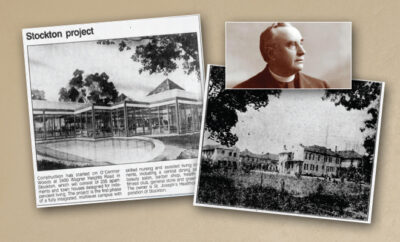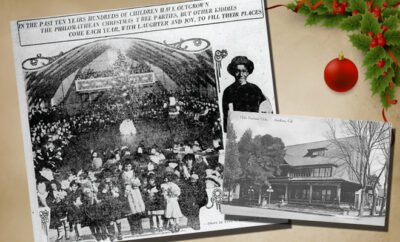 SAN JOAQUIN COUNTY HISTORICAL MUSEUM
SAN JOAQUIN COUNTY HISTORICAL MUSEUM
Education and Agriculture: A Local Standard
Agricultural education has existed in San Joaquin County for a long time. In a county and region that until recently has been dominated by small-business agriculture, perhaps this is not surprising. For over 170 years, parents and community leaders have invested in a variety of programs through which children have learned about the business and lifeways of the farm.
Articles from The Daily Evening Herald in the 1860s suggest that the Stockton school system, led by pioneer educators and, coincidentally, farmers such as Valentine Peyton and L.M. Hickman, had agricultural classes for high-school-aged youth. The school districts in San Joaquin County during the 19th century maintained a range of class offerings on agriculture for teenagers, but by the 1890s those were standardized. In 1892, James A. Barr, a strawberry farmer from Escalon who worked as a principal and school board trustee, was elected superintendent of Stockton Schools.
Within five years, Barr had promulgated “the Stockton Method,” an approach to running school districts and modeling curriculum that was internationally renowned. It won the gold medal in education at the St. Louis World’s Fair, and by 1906 school systems in Chicago, Portland, Argentina, England and Australia had incorporated elements of its program. A foundational element of the method was that all high school students had to gain mandatory experience either working on a farm, in a factory or in a financial house. The goal was to produce students who were savvy enough to contribute to the economy upon graduation. Records from Stockton High yearbooks suggest that in any given year between 1897 and 1930, approximately half of all Stockton High students interned on local farms.
By the 1920s, farmers themselves began to organize what would become the most successful agricultural education program in national history, the Future Farmers of America. Established in Virginia, FFA reached San Joaquin County by 1929, with the first chapters at Stockton and Lodi High sending students to the first state convention that year in Los Angeles. Through the 20th century, tens of thousands of local students would join FFA and learn about agriculture. The program continues to this day and is a foundational component of local youth programming.
In the 1980s, my institution, the San Joaquin County Historical Society & Museum, identified a need for “living history” education that used environmental simulations to teach students about historic lifeways in San Joaquin County. There were no local history programs for local K-6 students in the region at the time, and we wanted to solve that problem. By 1986, Valley Days was born. Pioneer educators at the museum such as Julie Gillespie and Lorene Freggiaro devised a program that entailed students dressing in 19th century garb, entering the museum and being magically transported back in time to the wild west of 1860s San Joaquin County. The program exists to this day and has served over 130,000 students since we started tracking numbers in 1992. Third and fourth grade students learn farming, corn grinding, gold panning, blacksmithing and more during the program. Valley Days continues to grow, with plans for facilities expansion in 2024
and 2025.
In any profession, a pipeline is needed to ensure that young talent is fostered and ushered into the field. In agriculture, it’s no different. Programs such as FFA and Valley Days are helping to inspire new youth to enter the agricultural world. With the number of small farms declining, this is more important than ever. These programs have a great heritage and are worthy of continued support from the community.










